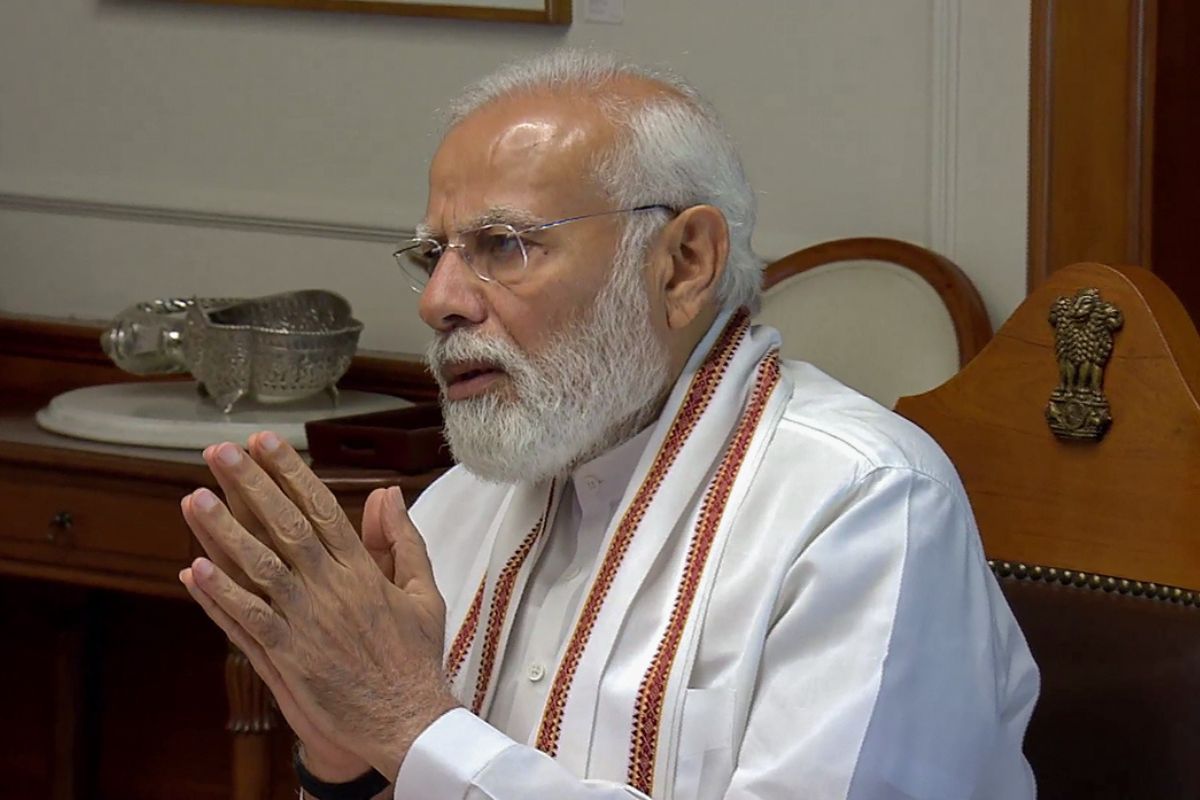PM Modi on 3-day visit to 3 states–MP, Bihar, Assam–from Sunday
According to the Prime Minister’s Office (PMO), the Prime Minister will visit Madhya Pradesh, Bihar and Assam from February 23-25.
Tweets showed the multi-disciplinary National Disaster Response Force (NDRF) and State Disaster Response Forces (SDRFs) of different states have been involved in several operations to rescue stranded people.

Narendra Modi [File Photo]
As monsoons wreaked havoc in the north and other parts of India, Prime Minister Narendra Modi on Monday spoke to senior Central ministers and officials for an apprisal of the situation and relief measures being taken by anti-disaster agencies.
The Prime Minister’s Office (PMO) tweeted: “PM Narendra Modi spoke to senior Ministers and officials, and took stock of the situation in the wake of excessive rainfall in parts of India. Local administrations, NDRF and SDRF teams are working to ensure the well-being of those affected.”
Advertisement
He spoke to chief ministers of Himachal Pradesh and Uttarakhand about the situation in the wake of heavy rainfall in their respecitive states and assured all help and support to the affected states from the government of India, it was stated.
Advertisement
Tweets showed the multi-disciplinary National Disaster Response Force (NDRF) and State Disaster Response Forces (SDRFs) of different states have been involved in several operations to rescue stranded people.
The India Meteorological Department (IMD) had predicted on Sunday that the rainfall activity will continue over Northwest India, but the intensity of showers may differ.
On Sunday, Home Minister Amit Shah spoke to Lieutenant Governors of Jammu and Kashmir and Delhi and took stock of the situation due to the rainfall. Mr Shah also spoke to Chief Ministers of Punjab and Himachal Pradesh and assured all possible assistance to both states.
The IMD has issued a red alert for Himachal Pradesh as the state is expected to experience heavy to very heavy rainfall including extremely heavy downpours on Monday. The IMD has asked people to avoid areas prone to waterlogging and stay away from vulnerable structures.
An Orange alert has also been issued for Punjab, North Haryana, Chandigarh and Rajasthan as these areas are likely to get heavy to very heavy rainfall on Monday. Uttarakhand is likely to get heavy to very heavy rainfall till the 12th of this month.
A heavy rainfall alert has also been issued for Meghalaya for Monday and Tuesday. In Arunachal Pradesh and Sikkim, heavy to very heavy rainfall including extremely heavy downpours is expected on Tuesday and the day after.
About 14 people have been killed in Himachal Pradesh in rain-related incidents. State Chief Minister Sukhvinder Singh Sukhu on Monday appealed to people to stay home for the next 24 hours amid the possibility of heavy rains during the period.
The state has announced three helpline numbers – 1100, 1070 and 1077 – for help of people who are in difficulty and need assistance.
Heavy rains in Delhi on Saturday and Sunday broke a 41-year record with several areas waterlogged. NDRF officials said teams at its Ghaziabad centre were ready to deal with any unprecedented situation due to the increasing water level in the Yamuna in Delhi.
The IMD map on Monday showed J&K, Himachal Pradesh, Haryana, Rajasthan, Gujarat, Punjab, Delhi and Kerala having “large excess” rainfall, while States like Uttarakhand, Uttar Pradesh, Maharashtra, Karnataka and Tamil Nadu having “excess” rainfall.
Dr Charan Singh, Head of the Regional Meteorology Centre here, said on Sunday that there are chances of heavy to very heavy rainfall for the next two days in Punjab, Haryana, Uttar Pradesh, and East Rajasthan.
“If we speak about Northwest India, especially the mountains then all the Himalayan regions especially Himachal Pradesh and Uttarakhand will witness extremely heavy rainfall for the next two days and after that, the intensity of rainfall will decrease, but heavy rainfall will continue to occur,” he said.
“If we speak about Jammu and Kashmir, there are chances of heavy to very heavy rainfall in the next 24 hours and after that of heavy rainfall,” he said.
“As far as Punjab, Haryana, Uttar Pradesh, and East Rajasthan are concerned, there are chances of heavy to very heavy rainfall for the next two days, but the intensity will decrease after two days. Rainfall activity will continue to occur over northwest India,” he added.
In 1978, rising Yamuna had flooded densely populated areas like Model Town and Hakikat Nagar near Delhi University. About 3.5 lakh people were affected and thousands were evacuated, along with most of Jahangirpuri’s residents who had to be shifted to safety.
Advertisement